Due to technology advancements in the recent decades, manufacturers have been able to decrease the size of electronics drastically. This has allowed for satellites to decrease in size, causing the small satellite (small sat) market to explode. To launch these satellites, companies have been creating smaller and cheaper rockets. These rockets are called small sat launchers.
Small sat launchers have a number of advantages. Firstly, they can launch small sats on their own dedicated rocket (or on a small rideshare), instead of on a rideshare mission with hundreds of satellites, allowing the customer to go to a more desired orbit. Furthermore, due to the smaller size, these rockets are inherently cheaper; there is no reason to pay for the extra performance of a medium or heavy lift launch vehicle for a small sat.
As more and more hardware gets developed and sent to the pad, it is time to see how the small sat launchers compare. This article will cover Firefly’s Alpha, Virgin Orbit’s LauncherOne, Astra’s Rocket 3, Relativity Space’s Terran 1, ABL’s RS-1, and Rocket Lab’s Electron. In addition, the Falcon 1 and Falcon 9 are included for comparison.
This is by no means a complete list of small sat launchers, just launchers that are far in development.
What is a small sat launcher?
A small sat launcher, more precisely a small-lift launch vehicle, is a class of rocket. This class of rocket can take up to 2,000 kg into a Low-Earth Orbit (LEO). Anything between 2,000 kg and 20,000 kg to LEO is a medium-lift launch vehicle, such as the Soyuz, Proton, and recoverable Falcon 9. Anything between 20,000 kg and 50,000 kg is a heavy-lift launch vehicle, such as the Falcon 9 when expended, or the Delta IV Heavy. Finally, any vehicle that can launch over 50,000 kg is a super heavy-lift launch vehicle, such as SpaceX’s Starship or the Saturn V.
With the large increase in small sats there is more demand for these less capable small-lift launch vehicles. Using a more capable rocket would be overkill even if the theoretical price per kilogram cost is cheaper on a larger rocket: for a 200 kg small sat a $5 million small sat launch is cheaper than a $50 million dedicated Falcon 9 flight.
Ride sharing is becoming increasingly routine with Space Flight Inc. and SpaceX’s dedicated rideshare missions. However, this limits a small sat to a limited set of orbits.
Rockets in development
There are several upcoming small sat launchers that are not far enough into development to be included in the comparison. However, they are still worth mentioning due to unique aspects and future of each.
Prime
First is Orbex’s Prime rocket. Prime is using a unique coaxial tank design, meaning that the liquid propane fuel tank is stored inside of the liquid oxygen tank. This reduces the number of bulkheads and insulates the fuel. Orbex hopes to make the first stage of Prime recoverable, but very little is known about the vehicle.
Skyrora XL
The second is Skyrora’s small-lift launcher, Skyrora XL. The vehicle will also use coaxial tanks. However, unlike Prime, the engines will burn on high-test peroxide and RP-1 in a closed cycle. The rocket will use a monoprop to spin the pump, like the RD-107 and RD-108 on the Soyuz. However, unlike on Soyuz the monoprop that goes through the pumps will be directed back into the combustion chamber.
Rocket-1
Launcher’s Rocket-1 rocket will utilize a closed cycle oxygen rich kerolox engine. This will be the first American engine of its kind, with the only other oxygen rich staged combustion engine being Blue Origin’s BE-4. The engine can reach 365 seconds of specific impulse in a vacuum, which is nearing the theoretical limit for RP-1.
Small Sat Launchers
Electron
At the time of publication, Rocket Lab’s Electron rocket is the only operational small sat launcher on this list. Electron first flew in 2017, on the mission It’s a Test, which ended in termination of the vehicle after a failure in the ground communication system. However, less than a year later on January 21, 2018 Electron successfully made it to orbit for the first time.
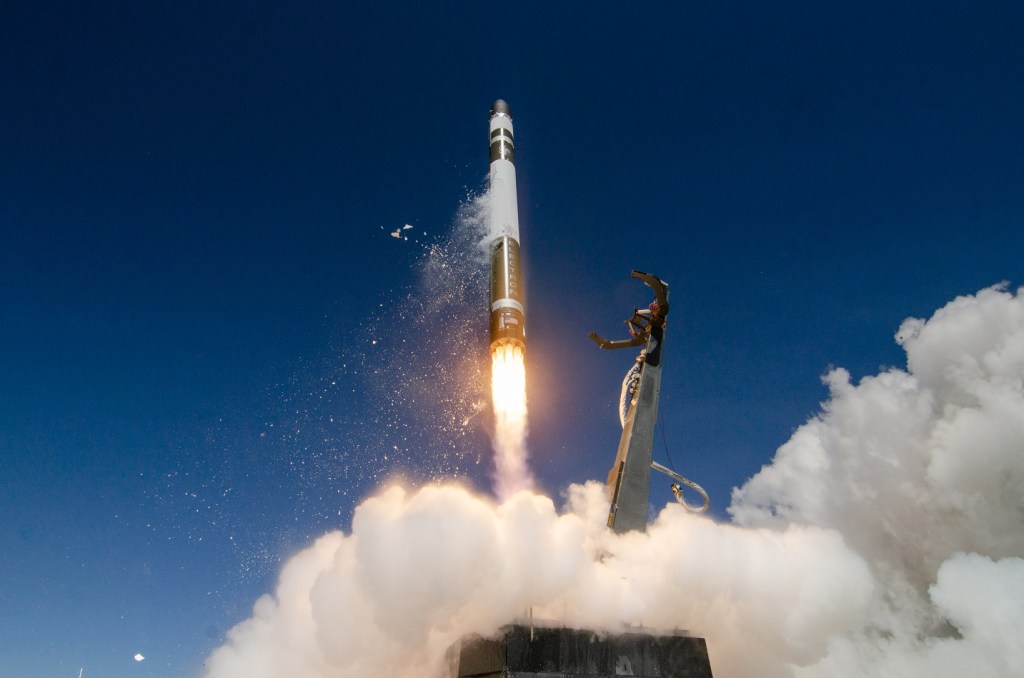
Unique Features
Electron has a lot of firsts and unique features. First of all, the entire body of the Electron is made out of carbon composites with no internal liner. This makes the tanks light weight and strong. Another unique part of the Electron is its engine: the Rutherford. The Rutherford is a keralox electric pump-fed cycle engine. This means that the engine uses electric motors to spin the turbines, as opposed to having a preburner or gas generator, significantly reducing the complexity of the engine. Moreover, as the engine is quite small, with nine Rutherfords on the first stage and one Rutherford on the second stage, the engine is able to be entirely 3D printed. This reduces costs and decreases manufacturing time.
The Electron currently launches from Launch Complex 1A (LC-1A) on the Māhia Peninsula, in New Zealand. However, Rocket Lab has two more launch pads coming online. A couple hundred meters to the right of LC-1A, Rocket Lab is building a second launch pad, LC-1B. Much like SpaceX utilizing SLC-40 and LC-39A at the Cape, Rocket Lab will use both pads to increase flight cadence. Finally, Rocket Lab is also building MARS Pad 0C in Wallops, Virginia, USA.
Despite Rocket Lab’s main launch pad, and much of their manufacturing, happening in New Zealand, they are an American company. Rocket Lab’s headquarters is in the United States, which allows them to launch NASA and USSF payloads and to bypass some ITAR restrictions.
Reuse
Additionally, another very exciting part of Electron’s future is recovery and reuse. Rocket Lab plans to use a parachute to slow down the stage, before attempting to catch it with a helicopter. (Learn more about these plans in this video.) At the time of publication, Rocket Lab has already successfully recovered two Electron boosters, and they have even reflown some of these components. For example, on the Running Out of Toes mission Rocket Lab reused the propellant pressurization system, which was used on the Return to Sender mission.
Photon
Finally, Electron has an optional third stage. This could either be their kick stage or Photon. Photon has two variants: an interplanetary version that can travel to Venus, as well as an Earth orbit one. The Photon has a single engine on it called the Curie. The Curie engine comes in three variants: a cold gas monoprop version, a bi-prop version and the deep space specific “Hyper Curie” biprop version that runs on some sort of green hypergolic propellants that Rocket Lab has not yet disclosed. Today, Curie is nearly always used in the bi-prop configuration and Hyper Curie is only featured on the deep space version of Photon. Additionally, Photon can be used as a satellite bus.
LauncherOne
Next is Virgin Orbit’s LauncherOne. LauncherOne is air launched, meaning that it uses a 747 both as a mobile launch pad and as a mini first stage. Air launch has a number of advantages such as being able to fly to launch from any inclination and fly around bad weather. However, this also has a lot of disadvantages as it limits the size of the rocket and increases complexity.
The rocket is launched from a modified Boeing 747-400, named Cosmic Girl. The 747 aircraft was chosen for a number of reasons. First off, unlike with the one of the kind Stratolaunch aircraft, there are thousands of pilots, mechanics, and engineers that are trained to work on and fly the vehicle. Also, the 747 was designed to hold a fifth engine under its left wing for transporting spare jet engines around the world. This gave Virgin Orbit a great place to mount the rocket as, with some modification to the structure, the airplane could support the rocket’s mass.

The Rocket
LauncherOne is a two stage keralox small-lift launcher. The first stage is equipped with a single Newton 3 engine, which is an open cycle engine. The second stage is also equipped with a single engine, albeit a vacuum optimized version called the Newton 4. Like the RS-68 on the Delta IV, the Newton series of rocket engines use the exhaust from the gas generator to roll the vehicle.
LauncherOne first launched in 2020, but failed shortly after engine ignition. In January of 2021 LauncherOne launched for the second time, successfully making it into the desired orbit.
Astra’s Rocket
Astra’s Rocket is a two stage portable small-lift launch vehicle. The rocket is able to fit inside of a standard shipping container; all of the infrastructure and ground service equipment is also able to be transported by shipping containers. These containers are then able to be loaded onto a C-130 aircraft and taken anywhere around the world.
Much like the aforementioned rockets, Astra’s rocket runs on keralox. The first stage is equipped with five Delphin engines, which like the Rutherford are electric pump fed and 3D printed. The second stage is equipped with a single pressure fed Ether engine.
Astra’s rocket has had three tests to date, with all three ending in failure. The first test, Rocket 3.0, failed during preflight testing when a fire occurred destroying the rocket. During the second flight, the range safety officer shut down the engines after it started to veer off course. Finally, in December of 2020 rocket 3.2 passed the Karman line, but came 500 m/s short of reaching orbit due to an incorrect fuel mixture in the second stage. As they came so close, Astra has ~10 customers ready to launch on Astra’s rocket starting on the next mission.
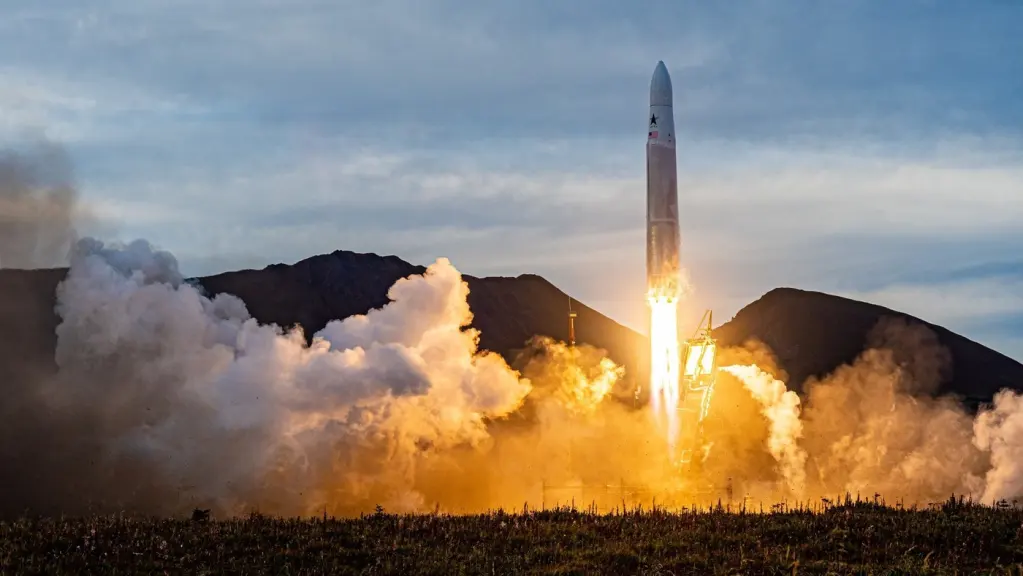
Alpha
Due to the history of Firefly, the company and the rocket are not well known. In 2014, Firefly Space Systems was founded and several years later, in 2017, the company went bankrupt and became Firefly Aerospace. Throughout this change, Alpha went from its aerospike powered form to the current form: the largest carbon composite rocket to date with four Reaver engines on the first stage and one Lightning engine on the second stage.
Both engines run on keralox and use a unique tap-off cycle. This means that the pressure from the combustion chamber is used to spin the turbines. The tap-off cycle is advantageous as it allows for all of the fuel and oxidizer to be burned in the combustion chamber; however, the cycle makes ignition of an engine more complicated.
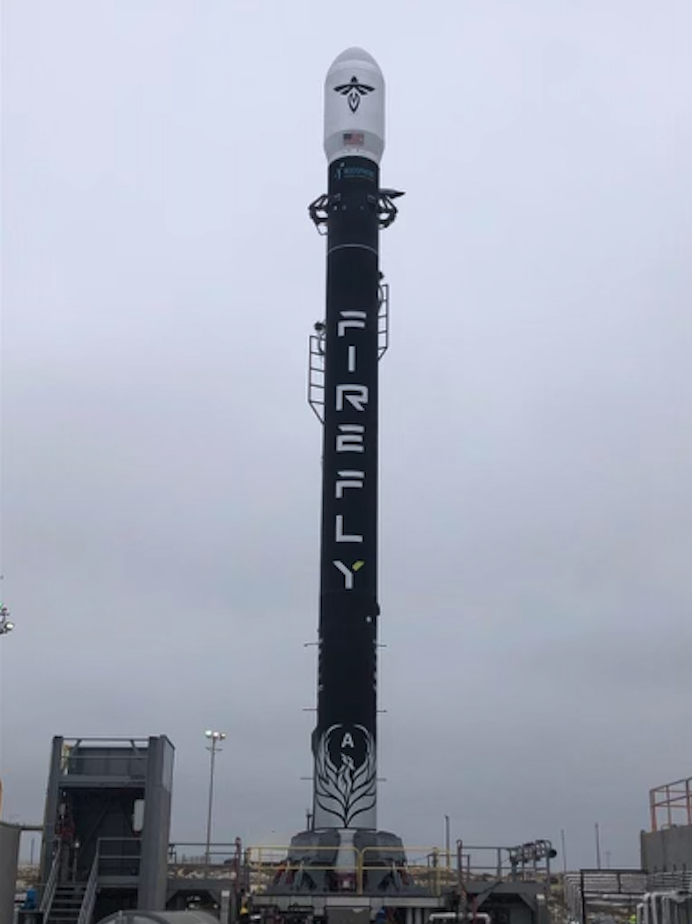
RS-1
ABL Space Systems has the goal of making the simplest and most cost effective rocket ever made with their RS-1. Like others on this list, the RS-1 is equipped with nine 3D printed keralox E2 engines on the first stage. One vacuum optimized E2 engine can be found on the second stage. The E2 engine is an open cycle engine, inline with their goal to have a simple rocket.
Like the Astra’s rocket and LauncherOne, the RS-1 can launch from anywhere. The rocket, the GSE, and other launch infrastructure is packed into a standard shipping container.

Terran-1
Much like with the other rockets mentioned so far, Relativity Space is going to 3D print the engines on Terran-1. Unlike the other rockets, the Terran-1 will be entirely 3D printed. By doing so, Relativity Space is able to decrease the number of parts required by their rocket by two orders of magnitude (100 fold), simplifying production and reducing lead time. Additionally, 3D printing allows them to easily change the design, as they do not need to change any tooling.
The first stage of the Terran-1 has nine Eon 1 engines. The second stage has a single vacuum optimized Eon 1 engine. The engines are open cycle and run on liquid natural gas and liquid oxygen. Like the Raptor and the RS-25, the Eon 1 engine will be used to autogenously pressurize the tanks. This removes the need to have helium stored on the vehicle. Since helium is only used to spin start the engines, no helium is stored on the vehicle as it is supplied by the ground service equipment.
The Terran-1 will launch from Launch Complex 16 (LC-16) at the Cape Canaveral Space Force Station, in Florida, United States.

Comparison
First, the size of all of the small lift launchers can be compared. Doing so makes it clear why these vehicles are called “small-lift launchers”, as they are significantly smaller than the medium-lift Falcon 9.
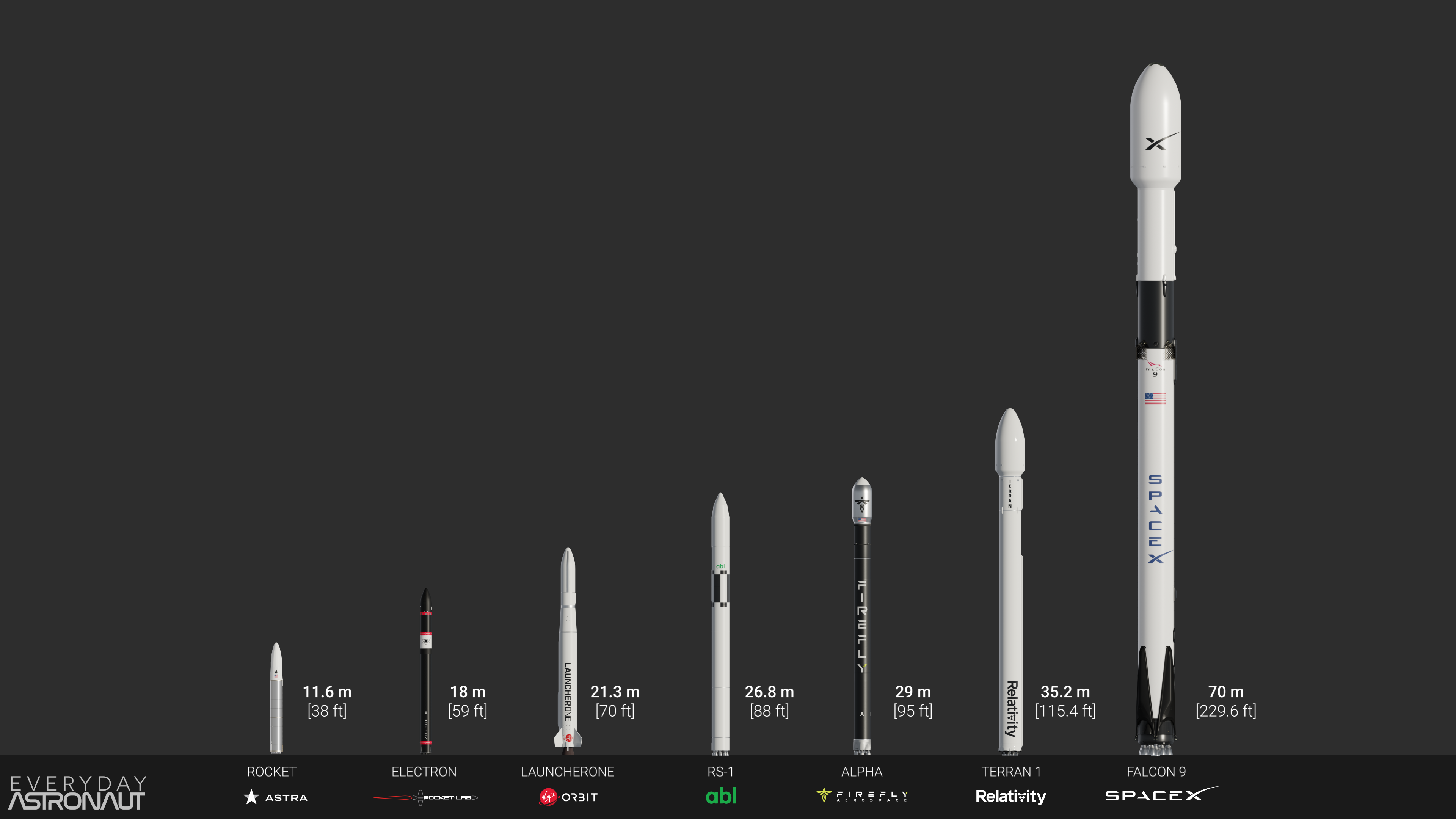
Furthermore, the diameter of each rocket can be compared as well:

Next, the payload capacity of each rocket to Sun Synchronous Orbit (SSO) can be compared. SSO is a low-Earth orbit, except at a high inclination of between 96.6° and 142.1°. These orbits ensure that the satellite passes over each point of the Earth at the same mean solar time every day. It is important to note that these payload numbers are currently estimates. Many of these rockets are not operational and still in development. Numbers in the future will likely vary largely as development continues and as additional variants become available.
Furthermore, the prices of each small sat launcher can be compared. All prices have been adjusted for inflation and are in 2021 USD. As these numbers are also estimates, they should be taken lightly as their true costs won’t be known until they are operational. Due to high degree of uncertainty in the payload estimate and the launch cost, a price per kilogram comparison would not be accurate or fair. It is important to remember that small-lift launchers are never going to be as cost effective as larger rockets in the cost per kilogram metric, as their only goal is to provide a dedicated ride to orbit.
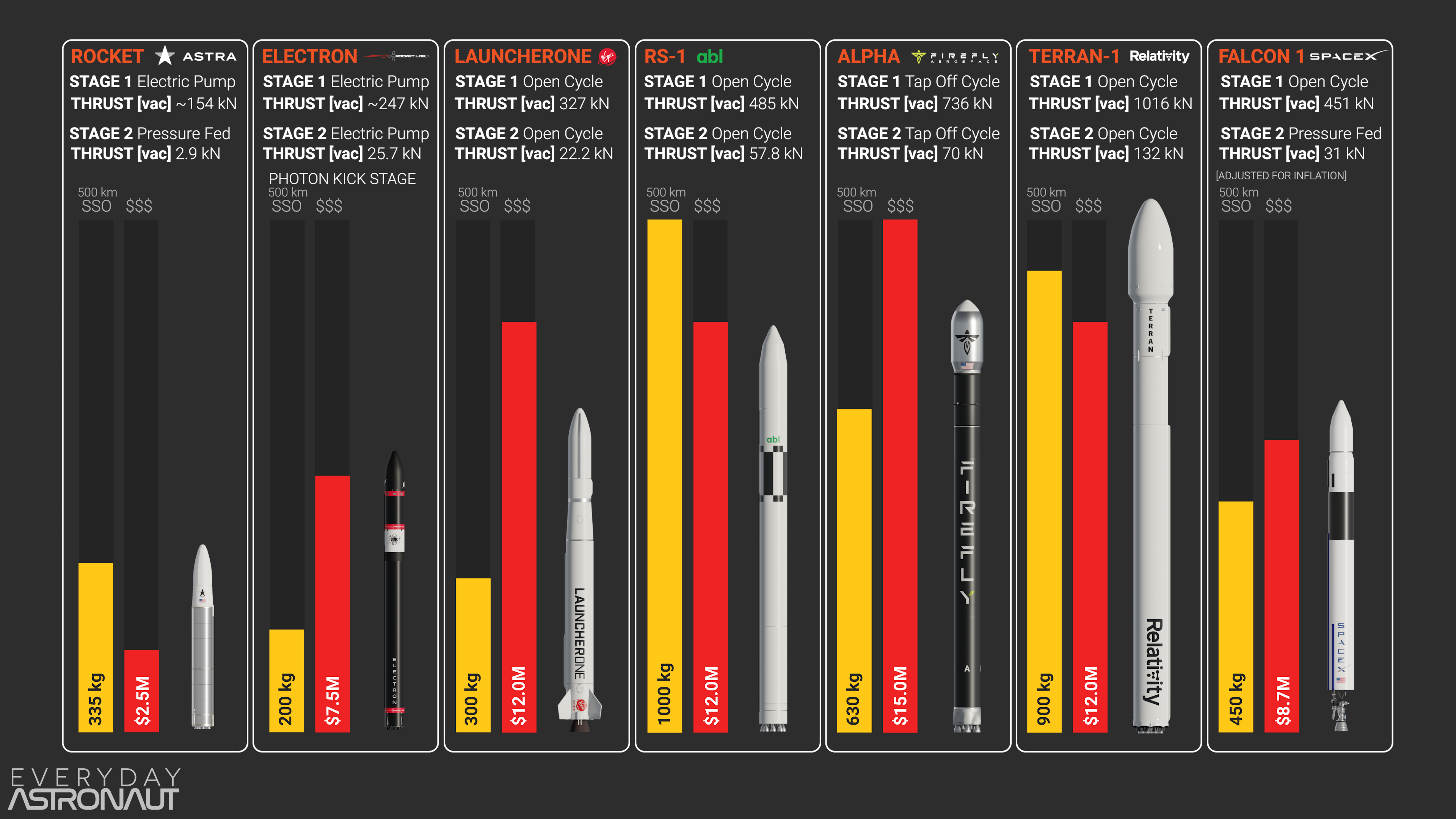
Summary
Overall, it is clear that out of the upcoming small-lift launch vehicles the RS-1 and the Terran-1 are going to be the most capable being able to deliver around 1,000 kg to SSO. This capacity definitely comes at a price, though, as these two rockets are significantly more expensive than Astra’s rocket and the Electron.
Rocket Lab’s Electron has a significant advantage over the other small-lift launchers as it has launched 20 times, launching over 100 spacecraft into orbit. Similarly, LauncherOne is also a proven rocket and has the capability to launch a payload into any inclination, a requirement that some payloads may require. Firefly is in the same position with Alpha, as they have a rocket on the pad waiting to launch.
Finally, it is truly amazing what SpaceX was able to achieve over a decade ago with the Falcon 1. With less funding, SpaceX was able to create a more capable and cheaper rocket than some of the yet to fly small sat launchers.





The Indian Gov owned ISRO has its SSLV which is scheduled for first launch this year end.
https://www.firstpost.com/india/isros-sslv-rockets-first-stage-solid-motor-fails-its-static-test-pushing-back-launch-timeline-9462251.html
There’s also a wikipedia link on SSLV
The only rocket in the list that doesn’t have a competitive advantage over Falcon 1 is LauncherOne, though neither Electron nor Alpha beat it by very much and only one of the others has even been built yet.
The payload/price chart suggests that both Rocket Lab and Virgin Orbit are in serious trouble if Astra’s Rocket pans out. That is looking to hurt worse than what SpaceX did to Roscosmos and Arianespace with the Falcon 9. While a 2/3 cost reduction might barely be possible (if extremely painful) for Rocket Lab if they can quickly perfect reuse, I don’t see how Virgin Orbit can ever achieve an 80% price reduction.
To make matters worse for VO both ABL and Relativity seem to want to price match despite being much bigger rockets. They are both early enough in development that those prices might be pie-in-the-sky but even the possibility should make Firefly nervous as well.
And then there is the Musk in the room: Starship. The often quoted $2 million figure is just the incidental cost and doesn’t include logistics, recovery, or amortized facility, vehicle, and R&D costs. But even if we add on $3 million for support and SpaceX’s 100% because-we-can profit margin that still only comes to $10 million per flight. At that price four out of these six are at risk including everything over the 1/2t mark. If that happens we might have to redefine the term “small-sat launcher”.
The other thing I’d like to note is that all but one of these are vanilla VTO rockets. The only exception is Virgin Orbit’s LauncherOne which is a conventional air-launched rocket. SNC’s Dreamchaser seems to be the only space plane likely to reach orbit any time soon but it is still launched by a conventional rocket. Nobody proposes fun designs like the Roton anymore. 🙁
I definitely think Rocket Lab is shaping up to be the dominant player as a small sat launcher. Virgin Orbit has a great edge with their air launched LauncherOne, and this is a capability DARPA has been looking to get for decades, but I don’t see it is a major commercial field advantage unless taking the airplane to the customer wins out in the long run, which it might.
I want to like Astra but it just seems like taking the Silicon Valley business growth strategy and applying it to space, and I don’t feel this will work. Space is more hard. Their goal of daily launches in 2025 doesn’t match the actual demand either. I get the feeling they took the number of all projected small sat launches and thought “if we put all of them on our rocket we can launch daily”. Most small sats and constellations will probably mainly use ride share on larger vehicles for cost saving, especially in large clusters close together.
Small sat market will grow but it will still be marginally niche and mainly be used for precision and/or timely orbital insertion. I think their acceptance of 5% or more failure in their launches is a major detractor for a start up company trying to test technology and be first to market with new tech.
Rocket lab is has a satellite platform in their Photon. They are building Neutron to launch constellations and they have realistic projections of market demand. They choose their launch sites with the largest range of orbital inclinations and most frequent launch times (most US sites are permitted to launch 1 time per month). I get the feeling Peter Beck, having launched 20 Electrons at the time of writing this, understands the market and future needs of small sat customers.
Astra’s management team is super top notch and so very well connected. But at the end of the day I want a rocket designed by an engineer not a management committee.
And as for the others, I think the window is closing or closed for R&D. Pretty much need to be in the game now with customers to survive. The real threat to the commercial market soon is probably ISRO’s SSLV which is heavily government subsidized, so it’s likely to be quite cheap and an unknown variable at the moment.
I think Astra’s payload capacity is incorrect. The maximum I’ve heard was 100-150kg. 150kg is 331lb so maybe that’s the source of error.
Hey there, the 300kg came directly from Astra. They might come up with updates in the future as the current version of their rocket would not support those numbers.
Wikipedia lists 150kg max payload to LEO for $2.5 million which was current as of the end of last year. Astra’s website currently claims 500kg to LEO and 335kg to SSO but I can’t find an updated price schedule anywhere. Either they’ve had a major breakthrough with their engines or they are planning a larger (and likely more expensive) rocket.
Sir but there is under development rocket of ISRO called SSLV (Small Sat Launch Vehicle). It is scheduled for launch in October this year. Do add it.
But this page is made amazing. Thank you for making such an excellent site. ❤️❤️
Would be good to get an update on the above after Astra’s announcement they are moving to an upgraded rocket 4.0 System 2.0 with capacity in the 300kg range where the current rocket only carries a “fraction” of this capacity. Price point is now 3.95mil as they are using an undisclosed engine with the same characteristics of Fireflies Reaver-1.
keralox or kerolox?